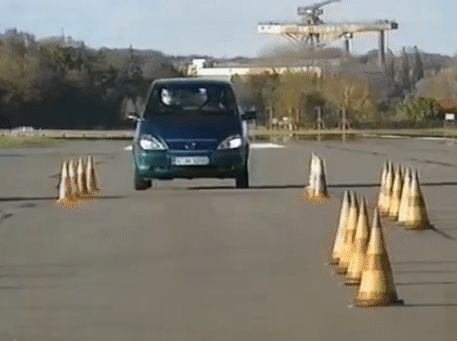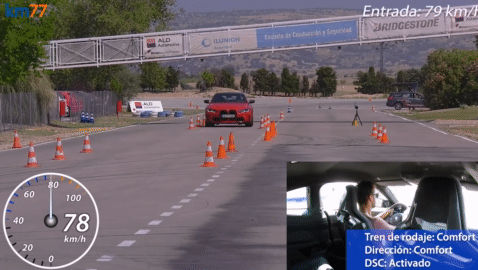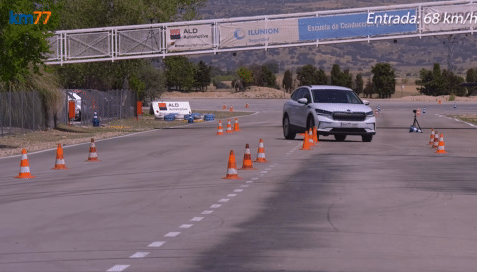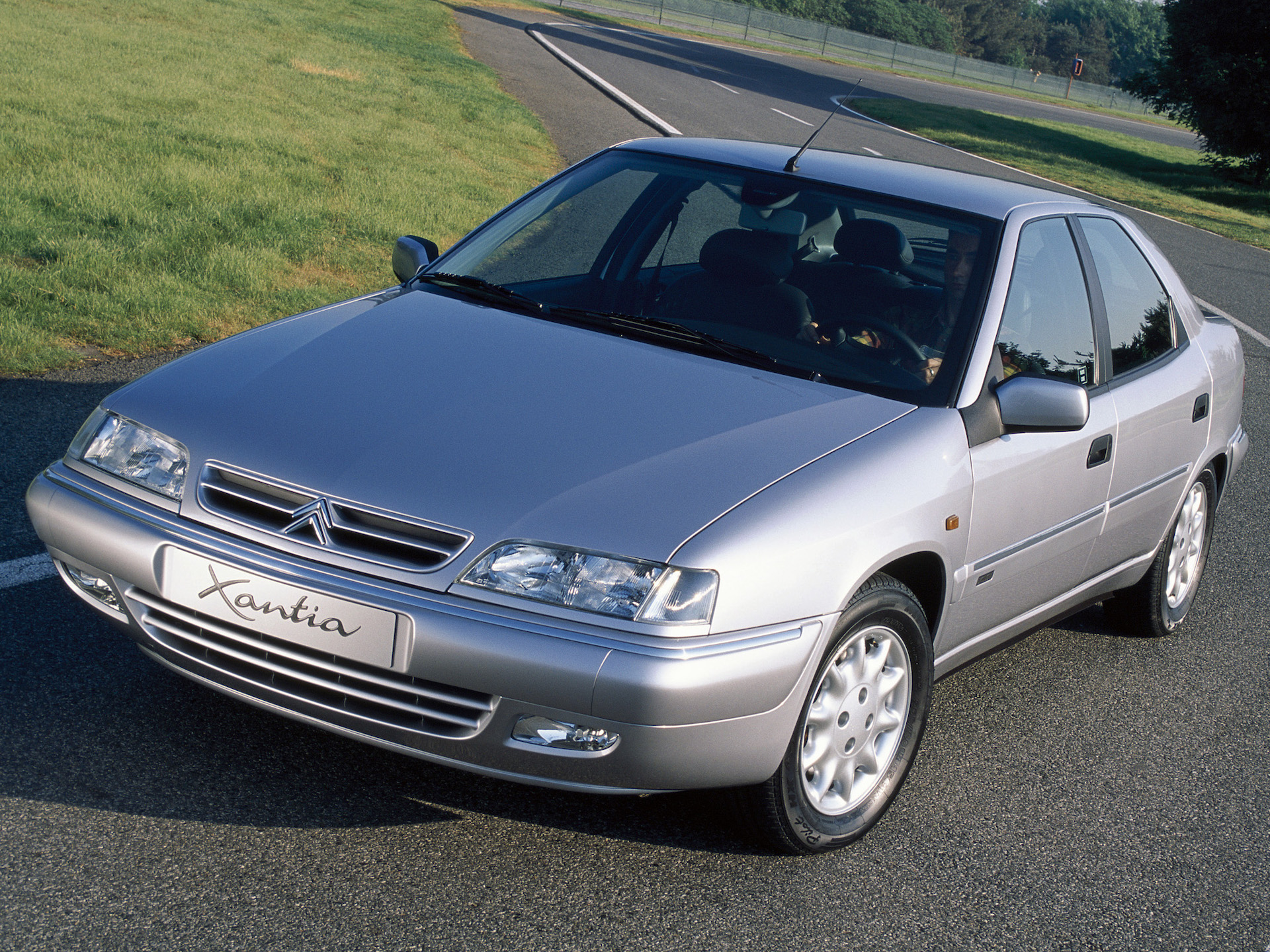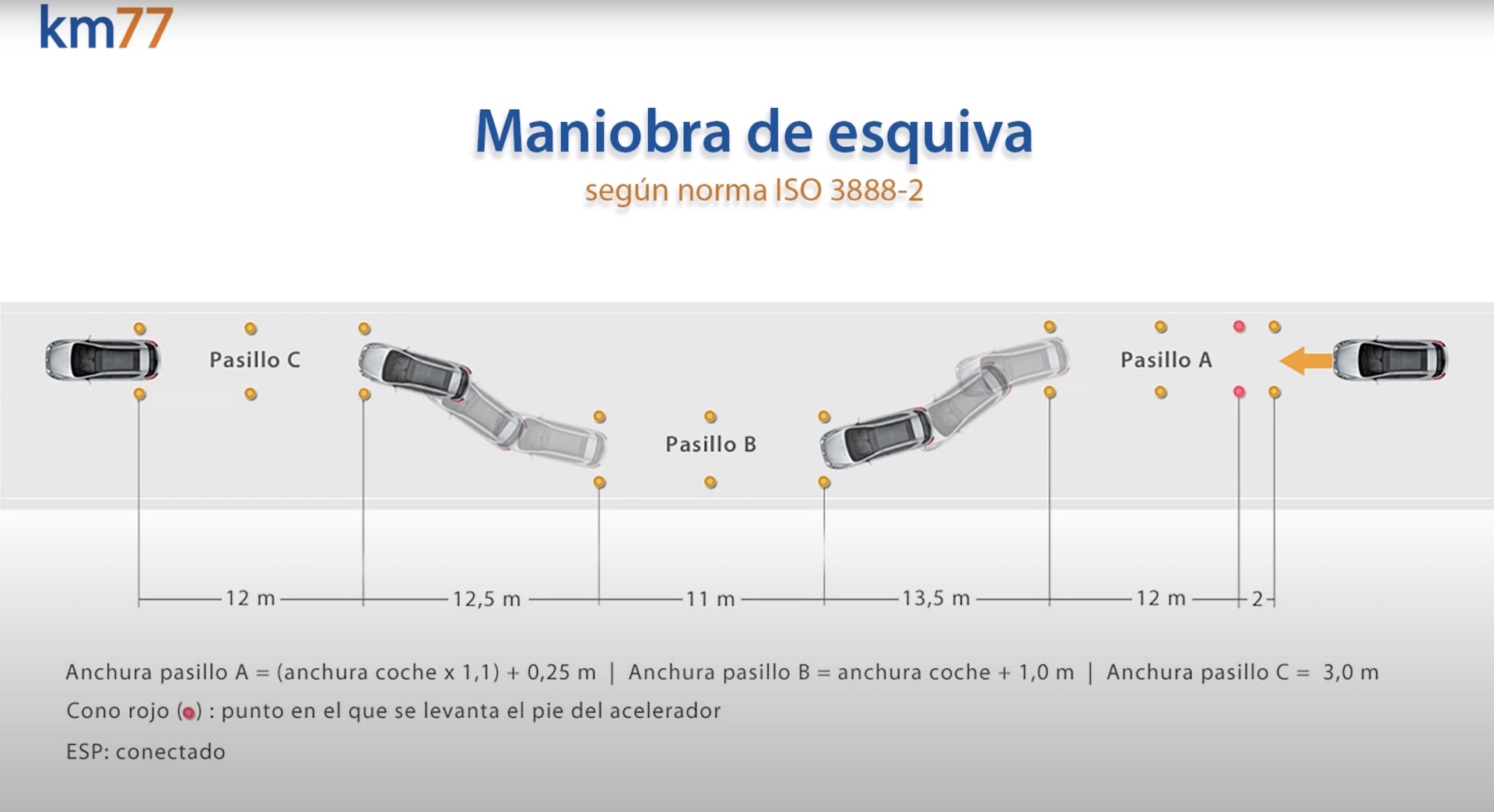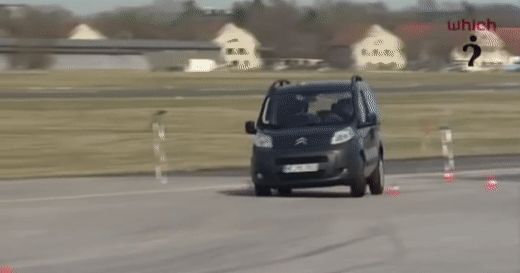I know, I know: another week, another moose test mess-up. But stay with us, there’s more to this story, which was sparked by the Porsche Taycan Cross Turismo’s struggles to negotiate the lane-change maneuver at the hands of professional Spanish cone dodgers KM77.
If you’ve watched a few moose test videos on YouTube from KM77 or Sweden’s Teknikens Värld you’ll have noticed that models most of us would deem as performance cars and are claimed to handle well in real-world cornering situations are often beaten by really humble machinery.
Looking exclusively at KM77’s figures in this story for consistency, we can see that a regular Ford Focus and Tesla Model 3 can both wriggle through the cones at 52 mph (83 km/h), yet a Porsche 992 Carrera 4S can only manage 50 mph (80 km/h), and the same company’s Macan and BMW‘s M4 both top out at 47 mph (76 km/h). Even the nimble Alpine A110 throws in the towel, and nearly throws a bunch of cones too at 46 mph (75 km/h).
The Moose Test: Origins And Infamy
The moose test, or elk test, which, as its name suggests, is designed to replicate the kind of maneuver you might make to avoid a stag with a death wish, originated in Scandinavia but gained worldwide notoriety when Teknikens Värld flipped a Mercedes A-class in 1997.
Related: Here’s Why So Many New Cars Still Fail The Moose Test
Mercedes initially denied there was a problem with its bold, cleverly packaged city car but was eventually forced to backtrack, recalling existing cars for modification including the fitment of ESP, which became standard across the range on all-new A-class models back then.
Are We Putting Too Much Store In the Moose Test?
The moose test has been accused of being unrealistic because the driver doesn’t use the brakes as they might in a real-life evasive maneuver, and obviously, it penalizes larger cars because they have less space in which to move. And it’s pretty clear from the lowly numbers produced by cars like the BMW M4, Porsche 911, and Alpine that a high trap speed in no way guarantees that a car will be more fun to drive or faster around a track.
Cars like the BMW M4 that are praised in other less descriptive tests for feeling agile are often too oversteery to perform well. And sometimes cars are hindered by their makers’ attempts to make them safe. Porsche purposely engineered in some front-wheel lockup into the ESP behavior of the Macan SUV because it believed it was the best way to prevent a rollover in an emergency situation, but the understeer introduced as a result meant it failed the moose test.
But the test definitely isn’t without merit. Recently we’ve seen two electric family SUVs, the Ford Mustang Mach-E and Skoda Enyaq, fare badly, which you might put down to a quirk of heavy electric cars versus same-size ICE models if it wasn’t for the fact that the Tesla Model Y performed so much better. If I was a responsible car buyer with my family’s safety at the forefront of my mind, rather than the oversteer-lovin’, irresponsible shambles of a dad that I am, I’d find the Tesla’s showing pretty compelling no matter how much fun the Mustang was on the dealer test drive.
The Legend Of The Citroën Xantia
One thing you might hear come up again and again in relation to the moose test is that almost no modern car can match the 85 km/h (53 mph) achieved by Teknikens Värld in a Citroen Xantia way back in 1999.
Related: Watch How The New Mercedes-Benz S-Class Deals With The Famous Moose Test
The Xantia was acclaimed for its great handling, and Teknikens Värld’s car had the optional Activa suspension, which was an active suspension system that effectively eliminated body roll. But how could it possibly be quicker than a modern Porsche 911 on skinny old-technology tires and without ESP?
KM77 decided to find out by sourcing three immaculate Xantias and persuading their owners to let their test driver fling them through the lane-change test. Like all of KM’s videos the narration is in Spanish, but don’t let that put you off. Turn on YouTube’s closed captions and auto-translate feature because it’s worth watching.
Different Times, Different Tests
From the off KM77 puts a pin in the dream by explaining where some of the confusion over the Xantia’s Porsche-crunching pace originates. The modern moose test is performed to a defined international standard, ISO 3888-2, which results in narrow lanes and a dramatically tighter course than the old test that the Xantia aced in ’99.
So the Citroen doesn’t have a hope in hell of reaching its original 85 km/h record on the newer, tighter course, but how fast would it go? After acclimatizing to what they describe as very different handling characteristics, and trying not to worry about the petrified owners standing by, KM’s test team eventually managed to hustle one of the Xantias through the cones at 45.4 mph (73 km/h).
Okay, so that’s way off what the Ford Focus can do, but the fact that a family car built more than 20 years ago running relatively narrow rubber, with slow steering, and without any ESP assistance, can get within 1.6 mph (2.5 km/h) of a lightweight mid-engine sports car like the Alpine and perform just as well as a modern family car such as the Audi A3 40 TFSi, as well as substantially better than others, is kind of mind-boggling.
Quicker Than The Porsche Taycan?
In fact, the Xantia was just 0.6 mph (1 km/h) slower through the course than the Porsche Taycan Cross Turismo Turbo S. While KM77 coaxed 48.5 mph (78 km/h) out of the Taycan sedan, the Cross Turismo, wearing identically-sized (but different brand) tires and carrying a fairly small 55 lb (25 kg) weight penalty courtesy of that rear bodywork, couldn’t manage more than 46 mph (74 km/h).
Related: Dacia’s 45HP Electric Spring Beats Tesla Model Y At The Moose Test
Which turns out to be slower than even a first-generation Mercedes A-class, the car that made the moose test famous. Okay, maybe not one of the original versions built before Mercedes acknowledged the instability issues, tweaked the suspension, and made ESP standard, but KM77’s test of a sportier 210 Evolution is still valid. The Evolution had a wider track and stiffer suspension than the base cars, but this one had done 129,000 miles and was wearing nasty budget tires, yet it still scored 46.6 mph (75 km/h).
And unlike the Toyota Hilux, Toyota RAV4 PHEV, and old Citroen Nemo, the 20-year old A-class didn’t pop a tire off a rim, jump up on two wheels or flip onto its roof.
Do you think the moose test is a valid metric and would it influence your buying decision at all? And who else would love to see KM77 run a swing-axle shootout between an early VW Beetle, Mercedes 300SL Gullwing, Triumph Spitfire, and Chevy Corvair? Leave a comment and let us know.




